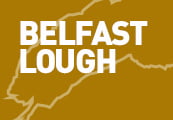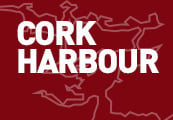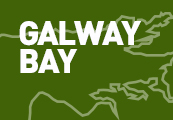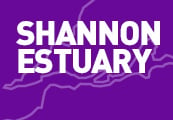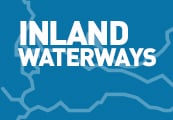Displaying items by tag: Blue Carbon
Blue Carbon Research Projects Will Study How Coastal & Marine Habitats Can Reduce Climate Change
With an investment of €2.6 million under the Marine Institute’s 2021 Blue Carbon call, two Irish research teams led by Dr Grace Cott and Dr Mark Coughlan of University College Dublin, will undertake a substantial programme of research to investigate how Ireland’s marine habitats store carbon and potentially reduce carbon dioxide concentrations in the atmosphere. This flagship award by the Marine Institute is co-funded with contribution of €400,000 by the Environmental Protection Agency (EPA).
‘Blue Carbon’ refers to the uptake of carbon dioxide from the atmosphere by natural marine and coastal habitats in a way that can be quantified. This is a critical ecosystem service which helps to reduce the extent and speed of climate change caused by greenhouse gas emissions from human activities.
The five-year programme of research will improve our understanding of how Ireland’s Blue Carbon habitats, which include coastal salt marshes and seagrass beds, can mitigate climate change. The research will also investigate the substantial carbon sequestration capacity of seabed sediments which are challenging to quantify. The successful projects, (BlueC and Quest), will deepen our understanding of the carbon dynamics in Irish marine ecosystems and assess their capacity to be integrated into climate policy.
This is research that is specifically targeted to inform policy and regulation. It will provide knowledge and evidence to assist with Ireland’s goal of attaining 51% reduction in greenhouse gas emissions by 2030 and improve our capacity to meet broader Irish and international climate and biodiversity targets.
In line with a commitment under the current Programme for Government, the research will also inform the appropriate and effective development, regulation and use of Marine Protected Areas, and broader marine spatial planning and management frameworks including the National Marine Planning Framework.
Dr Paul Connolly, CEO of the Marine Institute said, “This research will be extremely important in generating a much greater understanding of how Ireland’s marine and coastal systems act as a key carbon sink to mitigate against climate change. The ability to quantify the uptake and storage of atmospheric carbon by marine habitats such as salt marshes and seagrass beds could be key in helping to meet national and European climate adaptation and mitigation policy goals. This project is also important in the context of meeting EU nature restoration targets for those habitats that can capture and store carbon and prevent and reduce coastal erosion and flooding.”
According to Dr Grace Cott, University College Dublin and Principal Investigator in the BlueC project, “ocean and coastal marine systems play a significant role in the global carbon cycle, representing the largest long-term sink of carbon. Ireland has two Blue Carbon habitats; saltmarsh and seagrass meadows, and a vast marine territory containing potential Blue Carbon systems, such as carbon-rich macroalgae, maërl, cold water corals, phytoplankton and sediments. Specifically, for Ireland, there is a paucity of data on the carbon storage capacity of these ecosystems, and a lack of coherent management strategies that hampers our ability to integrate these ecosystems into climate policy frameworks.”
Working with project partners NUI Galway and University College Cork, the overarching aim of BlueC is to advance scientific understanding of the carbon dynamics in Irish coastal and marine environments, whilst simultaneously improving management and harnessing their potential for climate mitigation, adaptation and other ecosystem services to underpin policy development. Dr Cott emphasises that engagement with stakeholders will be a key goal throughout the project in addition to building national capacity for Blue Carbon research across disciplines. A key deliverable from this project will be a validated national inventory of the carbon storage capacity of Blue Carbon habitats which will enable inclusion in National Inventory Greenhouse Gas reporting to the United National Framework Convention on Climate Change.
Dr Mark Coughlan, also of University College Dublin and Principal Investigator in the Quest project, says, “Ireland’s expansive marine resource has the potential to sequester and store significant amounts of carbon in seafloor sediments and the habitats they support.”
He explains the challenge he and his partners are trying to address, “there is a scarcity of data and information on the past and present stock of carbon in seafloor sediments. At the same time, Ireland’s seabed is coming under increased pressure from direct human activities which add to the impacts of climate change itself. To fully understand, and effectively manage the seabed in terms of maximising this Blue Carbon potential, requires a thorough understanding of carbon cycling in the marine environment over time, physical processes at the seafloor and high-quality spatial mapping.”
The Quest project team (a collaboration between University College Dublin, Dublin City University and the Geological Survey of Norway) comprises experienced and skilled researchers in these areas who will conduct a multidisciplinary programme of research to qualify and quantify stocks of carbon in Irish marine sediments, examine and characterise threats to Blue Carbon in these settings and support the development of long-term management strategies. This will include supporting the designation of Marine Protected Areas (MPAs) and facilitate the delivery of the Government’s Climate Action Plan. The Quest project also intends to engage with stakeholders and the public to achieve a better understanding of Blue Carbon across society, and to raise the visibility of such research at a national and EU level.
The BlueC and Quest projects are due to commence in June 2022, and the two teams are looking forward to sharing their research findings as widely as possible over the next five years.
The Blue Carbon Research Programme is carried out with the support of the Marine Institute and the Environmental Protection Agency funded by the Irish Government.
Young Boy Joins Grassroots Effort to Protect Vulnerable Seagrass Meadows
In Co Wexford, a seven-year-old boy has joined the grassroots effort to conserve vulnerable seagrass beds around Ireland’s coastline.
According to RTÉ News, Shem Berry has lent a helping hand to volunteers who have been clearing an invasive seaweed, Sargassum muticum, which smothers a seagrass meadow at Kilmore Quay.
Seagrass meadows are considered key ‘blue carbon’ habitats, acting as a natural carbon-capture store while also filtering sediments, keeping shorelines stable and providing a safe home for inshore marine wildlife.
“I think it’s important to look after the environment, not only on land, but on the sea,” said Shem.
As previously reported on Afloat.ie, environmental NGO Coastwatch has called for seagrass habitats to be specified for protection under the State’s new marine planning legislation.
RTÉ News has more on the story HERE.
Invasive seaweed is a growing threat to Ireland’s vital seagrass meadows, according to Coastwatch Ireland.
The Irish Times reports on concerns for the health of seagrass habitats around the coast affected by the presence of Sargassum muticum — a brown seaweed that originates in western Pacific waters and has spread in Europe since the 1970s.
In Kilmore Quay, Coastwatch says a large zostera marina seagrass meadow is being killed off by a blanket of the seaweed.
Seagrass meadows are ‘blue carbon’ habitats, acting as significant stores of CO2 captured from the atmosphere. But they are vulnerable and can be easily overrun, says Coastwatch’s Karin Dubsky.
Last October, Afloat.ie noted findings in an Irish Wildlife Trust report that highlighted “significant declines in carbon-sequestering seagrass meadows” in four Special Areas of Conservation.
The Irish Times has more on the story HERE.
Marine Institute To Launch Funding Call Aimed at Capturing Ireland’s ‘Blue Carbon’ Potential
This month the Marine Institute will launch a funding call for a major programme of marine science research in the area of ‘blue carbon’.
The absorption and storage of atmospheric carbon dioxide in the world’s oceans and coastal regions has been identified as one of the ways in which marine ecosystems can reduce the impacts of climate change.
Funding of up to €1.6m has been earmarked for the call to support a large-scale research project to run from 2021 to 2026.
Launched in June 2020, Ireland’s Programme for Government recognised the “the enormous blue carbon potential that the ocean has to offer in tackling climate change”.
Collaborative research initiative
The Government tasked the Marine Institute — the State agency responsible for marine research and innovation — with a collaborative research initiative, aimed at investigating the climate-change mitigation potential of blue carbon and working towards creating an inventory that will assist the EU in meeting Ireland’s climate-change objectives.
In order to prepare the ground for such a large-scale research programme, the Marine Institute commissioned a synthesis report to review existing knowledge on blue carbon habitats and their role as carbon sinks in Ireland. This report was published in May 2021.
“Blue carbon refers to carbon which is stored, or sequestered, in the ocean and in vegetated habitats around coastal regions,” explains the report’s lead author Dr Grace Cott, assistant professor at the UCD School of Biology and Environmental Science.
“In terms of blue carbon which we can actively manage, what we are really referring to is the vegetation in coastal regions, and that means three main habitats: firstly, mangrove forests — which we don’t have in Ireland and are mostly found in tropical regions — secondly, salt-marsh habitats and finally, seagrass meadows.”
From photosynthesis to sediment trapping
Carbon sequestration — the long-term capture and storage of carbon dioxide (CO2) from the atmosphere – can take place through a range of natural processes, from photosynthesis to sediment trapping, where carbon-based sediments from the tide are physically trapped by vegetation.
The Marine Institute report points out that Ireland’s tidally influenced coastal wetlands comprise approximately 160 square kilometres of salt-marsh and seagrass beds. Globally, although these habitats represent a much smaller area than terrestrial forests, their total contribution to long-term carbon storage is comparable to carbon sinks in tropical forests.
According to Dr Cott, salt marshes in Ireland are up to 10 times more efficient than agricultural grasslands at storing carbon on a per area basis. This is mainly due to the lack of microbial decomposition in these wet regions, which inland causes the release of carbon from the soil as carbon dioxide.
Supporting blue carbon into the future
The loss and destruction of vegetated coastal ecosystems threatens their ability to function as long-term carbon sinks, and mismanagement can lead to the release of stored carbon back into the atmosphere, says Dr Cott.
“But there is hope in the management of these resources,” she explains. “Even though researchers need to conduct further research into the matter, we are already becoming aware of certain strategies which can help preserve our blue carbon habitats around the Irish coast.”
These include allowing salt mash habitats to migrate inland, and improving water quality to optimise carbon capture in seagrass beds.
“Looking ahead, I believe that Ireland will need an appropriate management framework, led by Government, to enhance protection of these habitats in relation to carbon sequestration,” Dr Cott adds.

